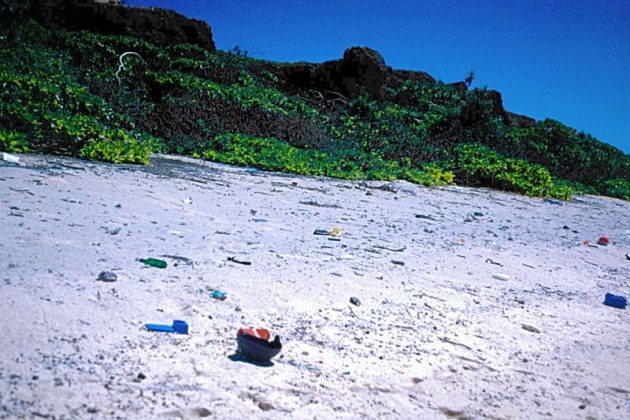How Seabin Project is pumping out hundreds of kilograms of plastic from oceans
Did you know that a reserve of around 14 million tonnes of microplastics might be buried at the bottom of the world’s oceans? The concerning figure was the result of a study by an Australian agency Commonwealth Scientific and Industrial Research Organisation (CSIRA). During the study, the agency surveyed oceans along the south Australian coast that the number of microplastics present on the seafloor was much more than the plastic pollution seen on the surface of these water bodies. The research is one of the several studies conducted by experts over the past few years to draw the world’s attention towards marine pollution. Plastic pollution in seas and oceans are a grave threat to not only aquatic life but also the ecosystem. This threat should be enough to wake people up and work for the cause.

However, by the time citizens and governments are able to chalk out a plan to fight marine pollution, it might be too late. Amidst the gloomy outlook, there are a few innovative solutions like the Seabin Project that can help the world mitigate marine pollution faster. The project is an effort to weed out plastic from oceans using seabins. Their flagship machine ‘Seabin V5’ moved along with the tide while collecting plastic particles from the seabed. These units are installed on pontoons and a team of Seabin Project employees looks after their daily maintenance.
To put it simply, a Seabin V5 sucks water from the bottom through a submersible pump that is able to displace 25,000 litre per hour. The pumped water then passes through a mesh bag installed inside the unit. The machine is plugged to a 110/22V outlet and the mesh bag catches the debris collected from the water. Next, the water is pumped back into the marina. The debris trapped in the mesh bag is either recycled or sent to a waste management facility. One of the best features of the Seabin V5 is that it can trap any particle of 2mm or more.
The project claims that a single unit can collect approximately 1.5 tonne of debris in a year which includes oil, fuel, microplastics and microfibres. The quantity of particles collected by the Seabin V5 varies with weather conditions and the volume of the debris. The catch bag can hold up to 20kg of waste and can be changed several times. Under glassy or foggy weather conditions, Seabin V5 has a 50-metre radius. In the case of windy or tidal conditions, the unit uses its strategic positioning system for currents and wind to detect litter.
The Seabin V5 is the brainchild of co-founders and water lovers Pete Ceglinski and Andrew Turton in 2014-2015. Since then, the Seabin Project has amassed a lot of attention and financial support with its unique product which aimed to rid oceans of pollution. Both Turton and Ceglinski were boat builders and their sailing experience gave them an insight into how plastic was choking the oceans of the world. Ceglinski is currently the CEO of the Seabin Project.
The company also has a robust plan chalked out to dispose of the waste collected by the units. Each client who purchases a Seabin V5 unit has its own waste service provider and a separate management plan. In the future, Seabin Project aims to foray into recycling services as well. The team describes itself as a supporter of the circular economy and plans to reintroduce vaporized waste collected by Seabin V5 back into the economy. The more the waste is reintroduced into the economy, the less of it ends up in landfills. The unit sports a 316 marine grade stainless steel bracket and weighs around 55kg. The catch bags are reusable. The machine comes with a two-year warranty and has recyclable components.
If you’re a buyer, you should know that the machine requires AC power of either 110V or 220V. Its power consumption is 2.5amps @ 500watts. With a capacity of holding about 20kg of litter. It is advisable that you should check it twice a day or as per your requirements. The company is currently using a non-toxic and durable anti-toxic system that reduces the need to clean the machine once every six to eight weeks. The frequency of cleaning also varies with the location where the machine is installed. The anode that comes with the Seabin V5 is made from non-toxic cadmium that adds to the unit’s durability. The anode needs to be replaced as required by the machine’s location. According to the company’s claims, two to six machines would be sufficient for a medium-sized marina. However, more units might be required as per the needs of a particular marina and if there are other point sources like rivers or outlets.
Till now, the company has installed 860 Seabin V5 units and has collected 1,278, 815kg of debris from oceans with these units. On an average, the installed units collect 3,612.8kg of waste every day.

